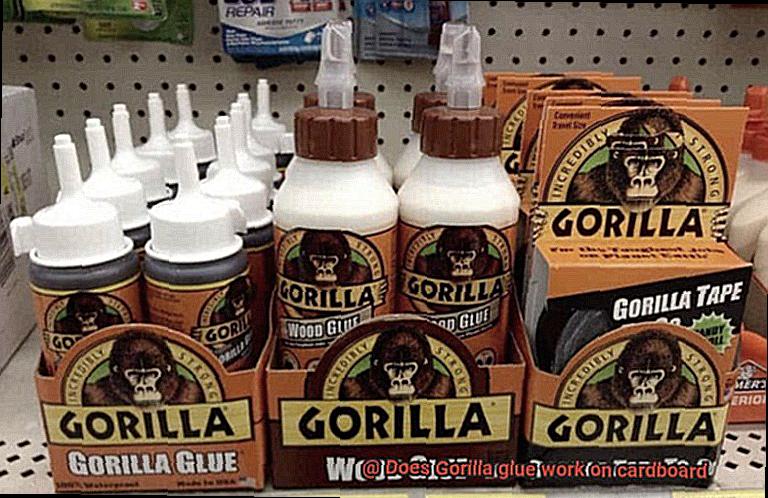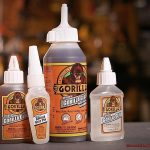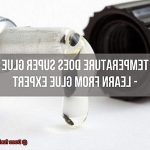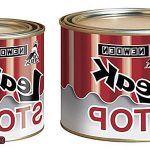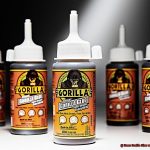Prepare to be amazed by an unexpected duo – Gorilla Glue and cardboard. We’ve all been there, desperately searching for a glue that can rescue our broken boxes or transform plain old cardboard into a masterpiece. But is Gorilla Glue the secret ingredient we’ve been longing for? In this blog post, we’ll embark on a thrilling journey into the world of Gorilla Glue and its magical bond with the underappreciated material – cardboard. So, fasten your seatbelts and get ready for an adhesive adventure that will have you glued to your seats.
What is Gorilla Glue?
Contents
- 1 What is Gorilla Glue?
- 2 Challenges of Using Gorilla Glue on Cardboard
- 3 Pre-Treating the Cardboard Surface
- 4 Types of Gorilla Glue and Their Uses
- 5 Applying the Gorilla Glue Properly
- 5.1 Preparation: Cleanliness is Key
- 5.2 Moistening the Surface: Activate the Power
- 5.3 Applying the Glue: Less is More
- 5.4 Applying Pressure: Seal the Deal
- 5.5 Considerations: Tailoring to Your Needs
- 5.6 Expansion: Tame the Beast
- 5.7 Environmental Factors: Battling the Elements
- 5.8 Safety First: Protect Yourself
- 6 Factors to Consider when Using Gorilla Glue on Cardboard
- 7 Pros and Cons of Using Gorilla Glue on Cardboard
- 8 Conclusion
In a world where strength and versatility are paramount, Gorilla Glue stands tall as the ultimate adhesive. Whether you’re fixing broken items or indulging in a creative project, Gorilla Glue is the go-to adhesive for achieving bonds that can withstand the test of time. In this article, we will explore the features and benefits of this incredible adhesive, equipping you with the knowledge to harness its full potential.
Unmatched Bonding Power:
Gorilla Glue’s reputation for unparalleled bonding power is well-deserved. It boasts the ability to adhere to a wide range of materials, including wood, metal, stone, ceramic, and select plastics. This versatility makes it an invaluable tool for various applications, from repairing furniture to constructing intricate DIY projects.
A Formula Like No Other:
The secret behind Gorilla Glue’s exceptional strength lies within its unique polyurethane-based formula. When applied, the glue reacts with the moisture in the air and expands, creating a foam-like structure. This expansion fills gaps and creates a bond that not only defies breaking but also exhibits extraordinary resistance to impacts.
Reliable in All Conditions:
One standout feature of Gorilla Glue is its waterproof nature. Once cured, it forms a robust and water-resistant bond capable of braving exposure to moisture and humidity. Whether your project takes you indoors or outdoors, Gorilla Glue ensures your glued items remain intact even in challenging environments.
Mastering Porous Surfaces:
Unlike some adhesives that struggle with porous surfaces like cardboard or fabric, Gorilla Glue excels in this domain. Its remarkable penetration capabilities guarantee a secure bond on these materials where other adhesives falter.
Best Practices for Success:
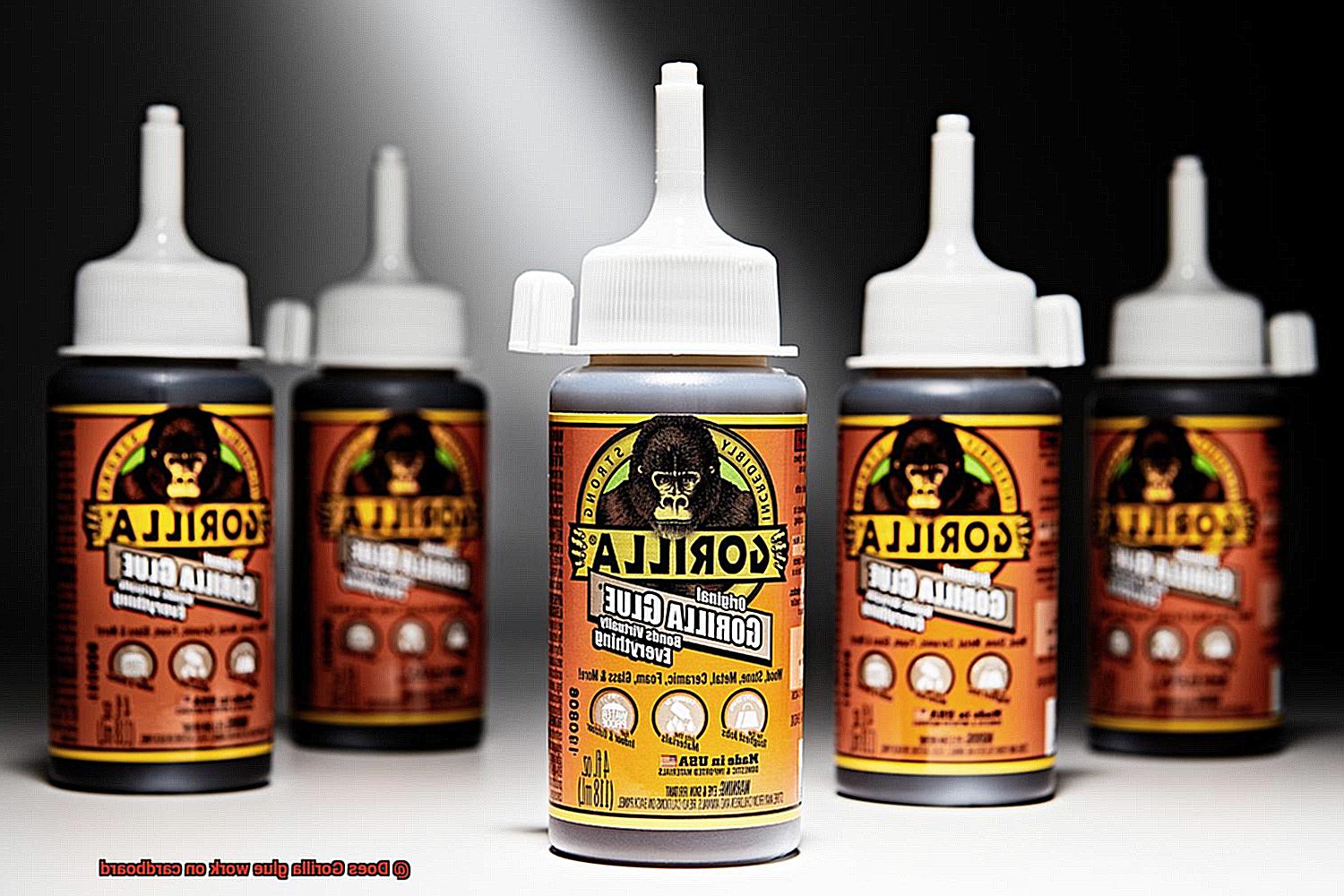
To harness Gorilla Glue’s full potential, following the instructions provided is crucial. Applying a thin and even layer of glue to both surfaces being bonded is the key to success. Moreover, clamping or applying pressure on the glued parts for at least two hours during the curing process ensures optimal adhesion and maximizes bond strength.
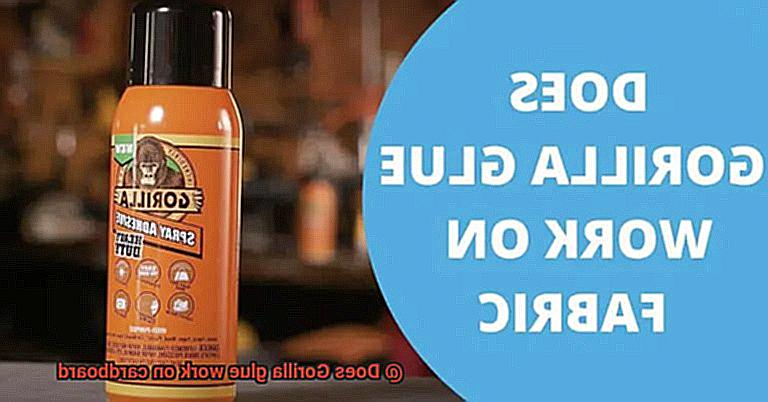
While Gorilla Glue boasts impressive adhesive properties, it does have limitations. Applications requiring flexibility may not find Gorilla Glue as the ideal choice, as it can become brittle over time. Additionally, the glue’s propensity to expand significantly during curing calls for judicious usage to avoid excessive foaming or mess.
Challenges of Using Gorilla Glue on Cardboard
After all, this adhesive is renowned for its strength and versatility. However, before you embark on your cardboard adventure, it’s essential to understand the challenges that come with using Gorilla Glue on this particular material.
First and foremost, one of the main obstacles is the absorption rate of Gorilla Glue on cardboard. As we all know, cardboard is a porous material that has a knack for absorbing liquids like a sponge. This means that when you apply Gorilla Glue to the surface of the cardboard, there’s a high chance it will be sucked in before it has a chance to bond properly. As a result, your bond may end up weaker than expected or, worst-case scenario, the glue may fail to adhere altogether.
But that’s not all. Another challenge lies in the expansion of Gorilla Glue as it cures. You see, this glue has a tendency to expand as it dries, which can spell trouble when working with cardboard. The expansion can cause the cardboard to warp or buckle, leading to an uneven and unstable bond. This predicament becomes even more precarious when gluing larger pieces of cardboard together.
On top of that, Gorilla Glue requires moisture to activate and cure effectively. While this might not be an issue for most materials, it poses a significant problem for cardboard. Why? Well, because cardboard is highly susceptible to moisture damage. Therefore, if you apply wet glue to the surface of the cardboard, it could weaken or even disintegrate entirely. That’s why utmost caution must be exercised when using Gorilla Glue on cardboard – avoid over-saturating the material at all costs.
Furthermore, brace yourself for the long curing time of Gorilla Glue. Unlike some other adhesives that dry quickly, Gorilla Glue takes several hours to reach its maximum strength. This can be quite inconvenient when working with cardboard, as you may find yourself having to hold or clamp the pieces together for an extended period until the glue sets. If you’re on a tight deadline or simply yearn for quick results, this extensive curing time can be a real challenge.
Last but not least, let’s talk about the strong adhesive properties of Gorilla Glue. While these properties are certainly advantageous in many cases, they can also present a challenge when working with cardboard. Once Gorilla Glue sets, it forms a bond that’s almost impossible to break without damaging the cardboard. This means that repositioning or adjusting pieces after they’ve been glued together becomes a near-impossible feat.
Pre-Treating the Cardboard Surface
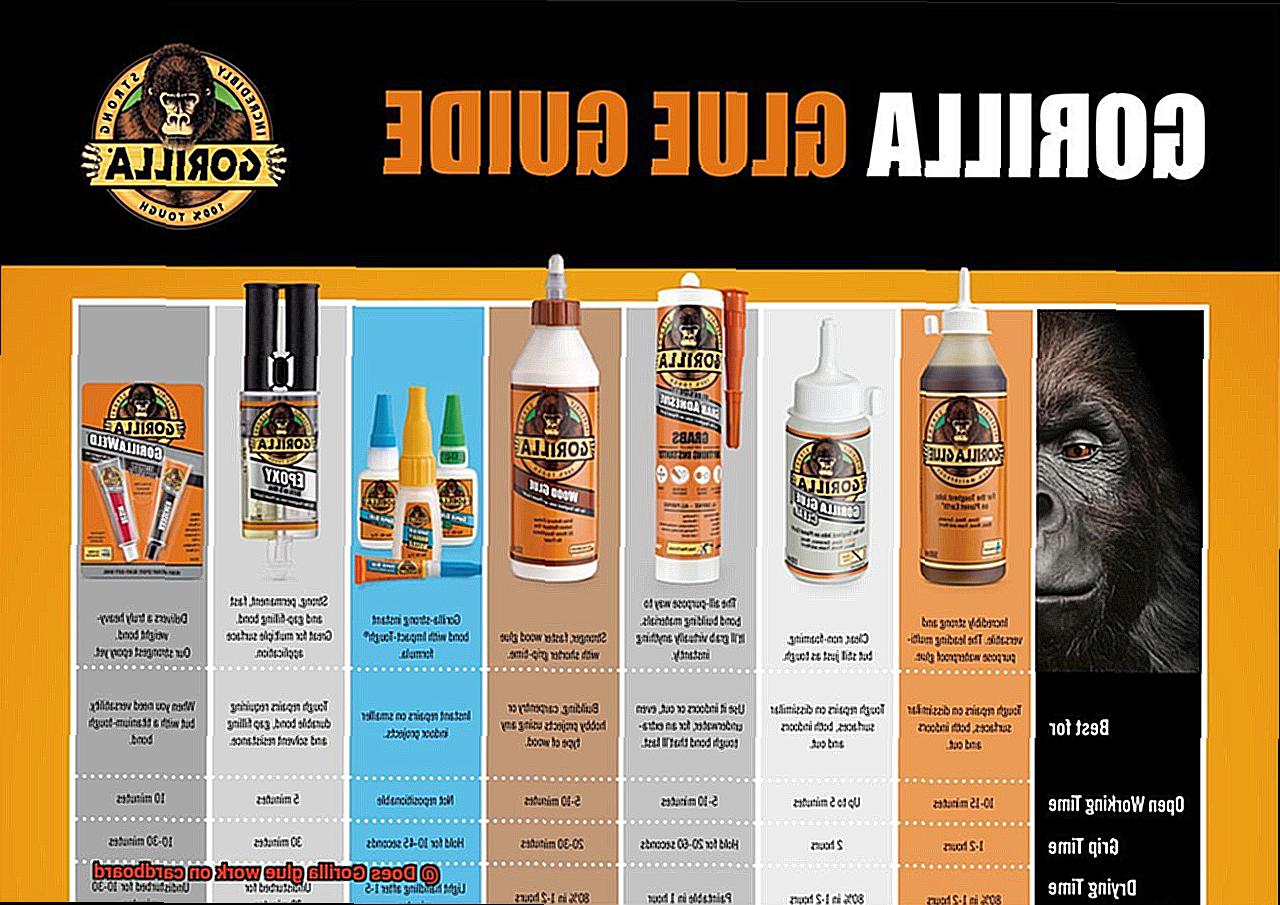
Gorilla Glue is a game-changer when it comes to bonding cardboard. However, to achieve a strong and long-lasting bond, pre-treating the cardboard surface is essential. In this article, we will delve into the significance of pre-treating the surface before applying Gorilla Glue, providing expert tips to ensure the best results.
Thoroughly Clean the Surface:
To optimize adhesive performance, start by thoroughly cleaning the cardboard surface. Dirt, dust, or grease can hinder the glue’s ability to bond effectively. Gently scrub the surface with a mixture of mild detergent or soap and water, then rinse it off with clean water. Ensure complete drying before proceeding.
Consider Light Sanding:
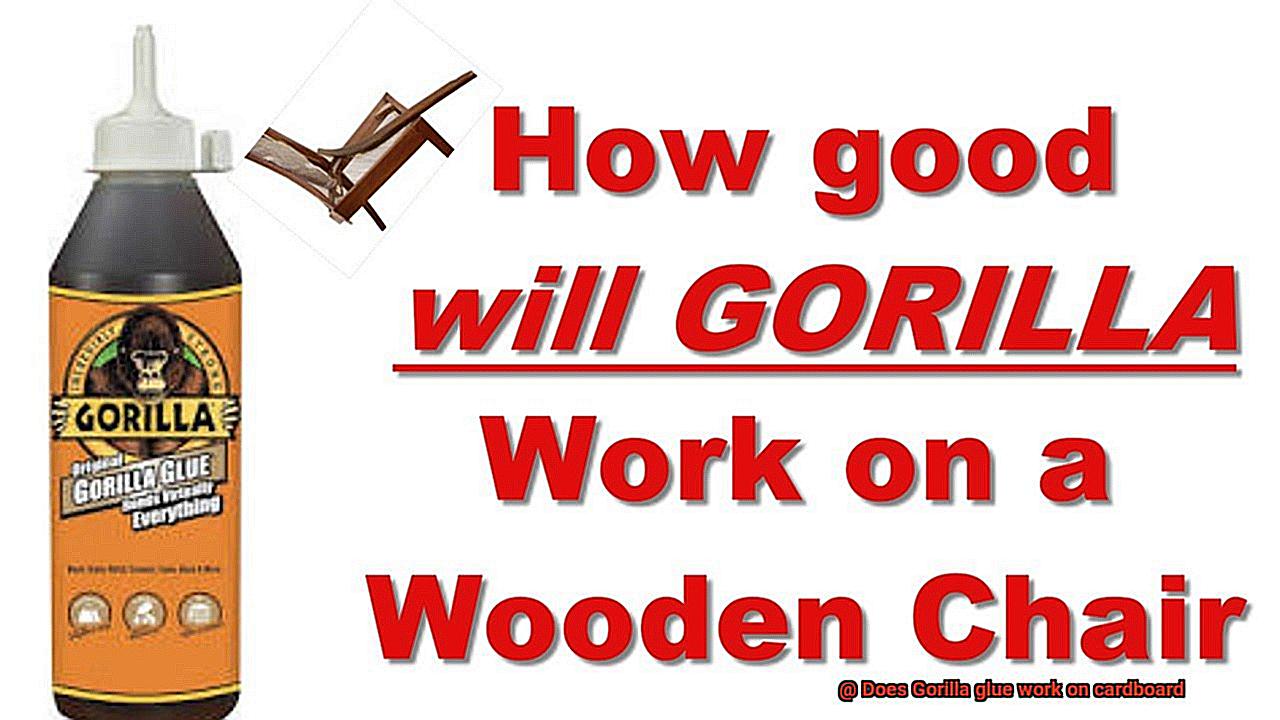
Enhance the bond strength of Gorilla Glue by creating a rough texture on the cardboard surface through light sanding. Using fine-grit sandpaper, apply gentle circular motions while sanding. Be cautious not to exert too much pressure to avoid damaging the cardboard.

Remove Glossy or Coated Surfaces:
For glossy or coated cardboard surfaces, removing the coating is crucial before applying Gorilla Glue. The coating acts as a barrier, preventing proper adhesion. Carefully scrape off the coating with a sharp knife or sand it down until you expose the natural texture of the cardboard.
Strengthening Corrugated Cardboard:
Corrugated cardboard poses unique challenges due to its fluted layer. To enhance bond strength, apply an additional layer of cardboard or paper on top of the fluted layer. This added layer provides stability and increases the bonding area for the glue.
Primer or Adhesive Promoter:
For optimal adhesion on cardboard surfaces, consider using a primer or adhesive promoter specifically designed for this purpose. These products significantly improve bond strength. Follow the manufacturer’s instructions for proper application.
Types of Gorilla Glue and Their Uses
In this article, we will explore the different types of Gorilla Glue and their specific uses for bonding cardboard. Whether you’re a crafting enthusiast or a DIY aficionado, understanding the various options available to you can make all the difference in your projects. So, let’s dive in and discover the mighty power of Gorilla Glue.
Original Gorilla Glue – The Powerhouse:
The original Gorilla Glue is a polyurethane-based adhesive known for its incredible strength. While it may not be specifically designed for cardboard, it works like magic on wood, metal, stone, ceramics, and even some plastics. If your project requires a strong and permanent bond, this is the glue for you.
Gorilla Wood Glue – Woody Wonders:
Gorilla Wood Glue is specially formulated for bonding wood surfaces. It sets quickly and offers a strong initial tack, making it ideal for woodworking projects. While its primary purpose is for wood-to-wood bonding, it can still come to the rescue if your project involves both wood and cardboard.
Gorilla Super Glue Gel – Instant Stickiness:
When you need things to stick together right away, reach for Gorilla Super Glue Gel. This fast-acting adhesive provides an instant bond on various surfaces like plastic, metal, rubber, and ceramic. While it may not be the best choice for cardboard due to its rigidity, it can still be useful for other crafty endeavors.
Gorilla Clear Grip – The Invisible Hero:
For projects where appearance matters, Gorilla Clear Grip is the go-to glue. This transparent adhesive dries clear, making it perfect for applications where you want the glue to be invisible. While it can bond materials like wood, stone, metal, and glass, it may not be the ideal choice for cardboard due to its clear nature.
Gorilla Epoxy – The Power Duo:
When you need a super-strong bond, Gorilla Epoxy is here to save the day. This two-part adhesive consists of a resin and hardener, providing high strength and durability. While it may not be specifically made for cardboard, it can still work its magic if your project requires a stronger bond.
Applying the Gorilla Glue Properly
Today, we’re diving into the world of Gorilla Glue to learn how to apply it properly on cardboard for an unbreakable bond. Whether you’re working on a school project or creating something unique, mastering the art of applying Gorilla Glue will ensure your masterpiece stands the test of time.
Preparation: Cleanliness is Key
Before diving into the gluing process, it’s crucial to prepare the surface of your cardboard. Take a moment to wipe away any dirt, dust, or grease that may hinder the adhesive’s effectiveness. A quick swipe with a damp cloth will do wonders.
Moistening the Surface: Activate the Power
Gorilla Glue thrives on moisture, so give your cardboard a light spritz or use a damp sponge to activate its power. Remember, we want the surface slightly damp, not drenched. This step sets the stage for a strong bond.
Applying the Glue: Less is More
When it comes to Gorilla Glue and cardboard, less is definitely more. Apply a thin and even layer of glue using a small brush or even a toothpick. Avoid the temptation to go overboard, as excess moisture can lead to undesirable warping or soggy cardboard.
Applying Pressure: Seal the Deal
To ensure an unbreakable bond, it’s time to apply some pressure. Secure the glued pieces together by clamping them or using heavy objects to weigh them down. Remember to follow the manufacturer’s instructions and exercise patience while allowing the glue to dry completely before removing the pressure.
Considerations: Tailoring to Your Needs
While Gorilla Glue is renowned for its strength, understand that it may not be suitable for all types of cardboard projects. Thin or glossy/waxy surfaces may require specific adhesives tailored to those materials. Don’t be afraid to explore other options for the perfect bond.
Expansion: Tame the Beast
Gorilla Glue has a tendency to expand as it cures, so it’s essential to use small amounts and leave room for expansion. This precautionary measure prevents messy seepage from the edges and ensures a clean and professional finish.
Environmental Factors: Battling the Elements
Consider the environment your cardboard project will face. Extreme heat or humidity can impact the bond strength. In such cases, it’s wise to reinforce the bond with tape or explore alternative adhesives to withstand these challenging conditions.
Safety First: Protect Yourself

As with any adhesive, safety should always be a priority. Follow the manufacturer’s instructions carefully, wear protective gloves, and ensure proper ventilation in your workspace. Create with confidence and peace of mind.
Factors to Consider when Using Gorilla Glue on Cardboard
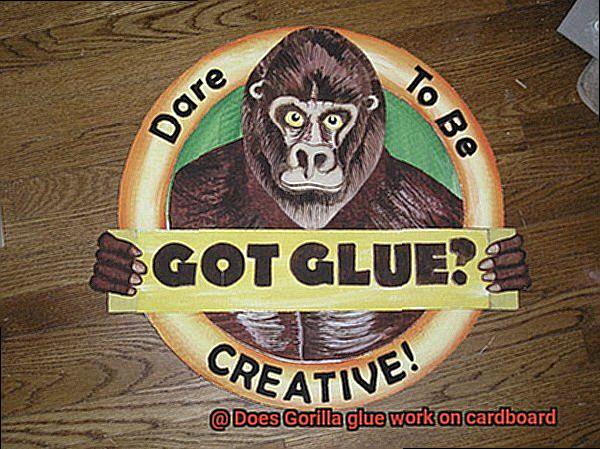
Using Gorilla Glue can be a fantastic choice for bonding cardboard pieces together, but there are a few crucial factors to consider to ensure a strong and durable bond. Let’s explore these factors in detail, so your project stays intact and stands the test of time.
First and foremost, let’s talk about the porosity of the cardboard. Cardboard is known for its absorbency, which means it can quickly soak up liquids. This absorption can be a challenge when using Gorilla Glue on cardboard. Highly porous cardboard can quickly absorb the glue, resulting in a weaker bond. To combat this, apply a thin layer of glue initially and allow it to partially cure before applying a second layer for added strength. This method will prevent the glue from being absorbed too quickly and ensure a stronger bond.
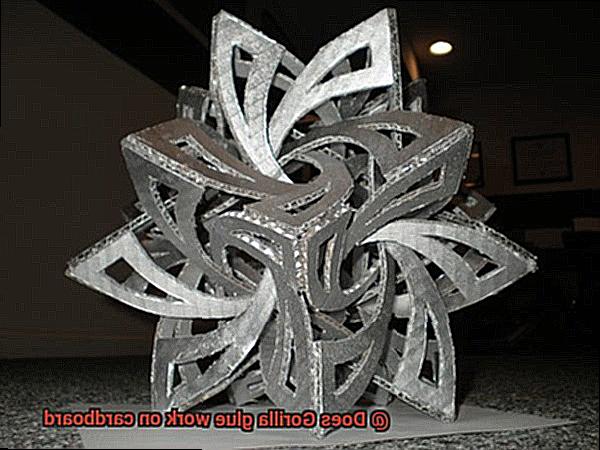
Moisture content is another crucial consideration when using Gorilla Glue on cardboard. It’s essential to work with dry cardboard because excessive moisture can dilute the glue and weaken its adhesive properties. Moisture can also cause warping or deformation of the cardboard, compromising the overall structure of your project. So, make sure your cardboard is dry before applying the glue.
Proper surface preparation is key to achieving a strong bond between Gorilla Glue and cardboard. Take the time to clean the surface of the cardboard thoroughly, removing any dirt, dust, grease, or other contaminants that could hinder adhesion. A damp cloth or mild detergent can be used for cleaning. Additionally, roughening the surface with sandpaper can enhance the bonding ability of the glue by increasing surface area contact.
When it comes to applying the glue, technique matters. Apply a thin and even layer of Gorilla Glue onto one surface and firmly press it against the other surface you want to bond. Avoid using excessive amounts of glue as it can lead to messiness and longer curing times. It’s also essential to hold or clamp the glued pieces together until the glue has fully cured to ensure a strong bond.
Speaking of curing time, patience is key. Gorilla Glue requires sufficient time to cure and achieve maximum bonding strength. The curing time depends on factors like temperature, humidity, and the amount of glue applied. It’s important to follow the manufacturer’s instructions regarding curing time and allow the glue to fully dry before subjecting the bonded cardboard to stress or load. Rushing this step can result in a weaker bond.
Temperature and humidity also play significant roles in the performance of Gorilla Glue on cardboard. Extreme temperatures, whether too hot or too cold, can alter the curing process and weaken the bond. Similarly, high humidity levels can prolong drying time and potentially compromise the strength of the bond. To achieve optimal results, work in an environment with moderate temperature and humidity conditions.
Pros and Cons of Using Gorilla Glue on Cardboard
This adhesive is known for its strength and versatility, making it an excellent option for various cardboard projects. However, before you start using Gorilla Glue on cardboard, it’s important to consider the pros and cons.
Let’s begin with the pros. One of the main advantages of using Gorilla Glue on cardboard is its strong bond. When applied correctly, this adhesive creates a durable and long-lasting connection between two surfaces. Whether you’re creating a cardboard sculpture or repairing a broken box, Gorilla Glue ensures that your creation stays intact.
Another benefit is the versatility of Gorilla Glue. It works well with different types of cardboard, including corrugated cardboard, chipboard, and cardboard boxes. No matter what type of project you’re working on, Gorilla Glue can handle it.
Water resistance is another standout feature of Gorilla Glue. Once it dries, this adhesive can withstand moisture and humidity without losing its adhesive properties. This is especially useful if you plan to use your glued cardboard in areas prone to dampness or if your project requires some level of water resistance.
Additionally, Gorilla Glue has a relatively fast drying time. Within 1-2 hours, your glued cardboard will be ready to go. This quick turnaround allows you to complete your projects in a timely manner, so you can move on to your next creative endeavor.
However, there are some cons to consider as well. One potential drawback of using Gorilla Glue on cardboard is its expanding nature as it cures. If not properly managed, this expansion can cause the surface of the cardboard to warp or distort. To avoid this issue, make sure to use minimal amounts of glue and distribute it evenly across the surface.
Messy application is another con to be aware of. Due to its thick and sticky consistency, Gorilla Glue can be challenging to apply neatly and precisely on cardboard. To minimize messiness, use small amounts of glue and spread them evenly using a brush or applicator.
Safety is also a concern when using Gorilla Glue. It contains chemicals that may be toxic if ingested or inhaled in large quantities. It’s crucial to handle the glue with care, wear protective gloves, work in a well-ventilated area, and keep it out of reach of children and pets.
Lastly, once Gorilla Glue is applied and dried, the bond is nearly irreversible. This can be problematic if you need to make adjustments or modifications to your project later on. So, make sure you plan your project carefully before gluing everything together.
Conclusion
Yes, Gorilla glue does indeed work on cardboard.
Its strong adhesive properties allow it to bond effectively with the porous surface of cardboard, creating a secure and long-lasting hold. Whether you’re crafting a DIY project or repairing a broken cardboard box, Gorilla glue is a reliable choice.
So, if you’re wondering if Gorilla glue works on cardboard, the answer is a resounding yes.

